One of the major tasks of living and traveling in an RV is identifying and securing places to stay along the way. There are differing views about the process. Some like to free wheel it driving until they feel like stopping and finding a place close by to hunker down. If staying for just one night that might include a Walmart or a Cabela’s parking lot. We tend to belong to the opposite group who like to know where they are stopping ahead of time and limiting the time on the road to a reasonable four to five hours a day.
Being members of the latter group requires planning. Looking at our current trek across the country required an initial macro view of where we might want to go and what we might want to see. That is determined by another difference in traveling philosophy. Some travel to experience various scenic locals that provide a picture of normal, everyday American locals. Many tend to gravitate to outdoor activities like hiking and kayaking and find places that will support that lifestyle. Others look for attractions some of which are connected to cities and places that are more touristy. We tend to be a little further toward the attraction end of the continuum. We enjoy the natural settings of national and state parks, and the occasional hiking excursion, but we also enjoy landmarks and museums.
Our macro planning for this extended trip out West included the idea of staying pretty close to interstate 10 that ranges all the way across the country from Jacksonville to Southern California and a return across Interstate 40 which moves through the northern sections of the southwest and through the plain states. Interstate 10 seemed like a safe route for February and early March until we reached some warmer climates in Arizona and SoCal.
When looking at potential stops after leaving a month stay in Pensacola, Florida our first major stop would be New Orleans. Finding a campground or RV Park (and the two are not always the same thing) always requires a fair amount of research and is clearly not an exact science. One must first decide if a stay directly in the area or slightly outside the target is warranted. After looking at parks in New Orleans itself, I decided to forgo that notion. For one thing I could not see driving a forty-foot fifth wheel through busy city streets. The other consideration was that possible sites were either run-down places with poor reviews or a high-end choice costing a hundred dollars per night.
The decision was to stay outside the city. When searching you have to rely on the reviews of people who have experienced the sites. I always start with a google search. That provides a list of places to start looking at. I will also go to a site called RV Park Reviews which list parks in each state and Canadian province that have been reviewed. I will also check with Passport America which is a membership service, one of a few we belong to, that provides member campgrounds and RV parks that offer fifty percent off the daily rates. If I can find a good site and a bargain all the better.
There did not seem to be a lot of decent places in the New Orleans area. When we are looking our priorities are clean, spacious and level sites, full hook-ups (50 amp electric, water and sewer), a pull-through site (backing in with this big a fifth wheel is not fun) and decent wi-fi. Other amenities such as cable and concrete pads are a plus but must be judged against the increased cost.
I narrowed it down to two choices. The first was a about a half-hour east of New Orleans off I-10. The reviews were fairly good but many mentioned that the sites were very tight. The other park, The Poche Plantation and Sugar Hill RV Park had better reviews but the website was somewhat vague. For one thing it appeared that there were two RV parks and it was unclear which was which. It was also about an hour west of New Orleans. It had spacious sites with concrete pads, free wi-fi and cable and the price was reasonable at forty dollars a night. After reading more about it, I decided to reserve a spot for four nights at the Poche Plantation and Sugar Hill RV Park.
I did have some reservations about staying at a plantation. Obviously, plantations conjure up an ugly time in our history. I had mixed feelings about staying at one. I had no doubt that at some point slaves had worked the plantation. Staying there seemed like desecration of that memory. I hoped that the actual RV park was separate from the plantation. That is how I interpreted the website.
Coming in on Interstate 10 and driving through New Orleans was a revelation. I did not expect that both Lake Pontchartrain and New Orleans were that vast. Both are massive. We also got to experience driving on highways that not only cross water but are built directly on water and follow that water for a long way. We would later find out that I-10 in Louisiana runs through and over water for many miles. Seventeen percent of Louisiana is water and traveling west along I-10, the Atchafalaya Basin, made up of vast wetlands and estuaries, is twenty miles wide and 150 miles long. Given that much land containing major water would necessitate building roads in and along the water as opposed to over it.
When we exited I-10 to make our way to the RV park we were a bit shocked. We were quickly deposited on route 44 which was a two-lane road that had several large corporations with processing plants and refineries including a chemical company, a coal mining company, and a grain company as well as others. Each had a major facility on the left side of the road with massive structures that towered over the road and on to the other side where there was a hill approximately thirty feet high running the entire length of the road. At first, I could not figure out the purpose of the structures. Some were pipelines while others actually had movable containers that clearly transported materials over the road. It all became clear when we began to see the tops of massive ships peaking up over what we later figured out was the levee. We were in an area where materials were mined, grown or produced and then carried over the levee to the waiting freighter ships to be sent up or down the Mississippi River to other places. Our first reaction was not positive. We hoped that our final destination would be away from this activity, but we knew that it was probably not to be the case.
About six miles down the road we found Sugar Hill RV Park. Pulling in we found a sea of RVs on concrete pads as far as the eye could see with very little vegetation or trees. We found the office, which was a trailer with several half-finished landscaping projects out front and no one in sight. A phone number was posted on the door. I called the number and a woman soon pulled up in a SUV. She made a call and then told me that I was in the wrong park. My reservation was at the plantation. I was told to go another six miles down the road and to see that camp host.
I later found out from the camp host that Sugar Hill was an RV park mainly housing workers from the area. It was originally just a piece of undeveloped land. After Katrina hit in 2006 FEMA had rented the land and built the campground with concrete pads and utilities for temporary trailers housing displaced people. When FEMA removed the trailers, the owner was left with a ready-made campground. Tragically, eighty-two of the 160 units in the campground were destroyed when a tornado tore through the area a few years ago. Three people died. In the aftermath a man was found dazed and barely alive over a mile away in the woods.
We arrived at the plantation which was located in an area that was a bit less industrial. At the front was a large mansion painted pink with black shutters and while columns. There were other structures in varying stages of construction near the front. We pulled in and the camp host greeted us having been notified ahead of time. He was a very nice and welcoming older gentleman. There were about ten pull through sites in a line in front and we were assigned an open one in the middle. The sites were clean, concrete pads across from a house that had a few apartments. The rest of the park was laid out behind a fence to our left and contained another thirty sites or so.
After settling in I went to hook up the cable line but could not find it. When I inquired, I was told that there was no cable any longer. A new company had taken over and required more than they were willing to do so they decided to forgo it. I was told that the antenna would pick up plenty of stations. It did. It was Super Bowl Sunday so that was important. During most of the game I thought it less important.
On Monday I had a chance to talk in more detail to our camp host, Howard. Howard is from Michigan where he owns and runs a sixty-acre living history farm. He has been spending the winters at Poche Plantation as camp host and historian for the last seventeen years. He is responsible for assisting with much of the restoration work in the mansion and on the grounds. Howard provided a lot of interesting and useful information about the area and many things to see and do including tips on New Orleans. Howard also invited us to take his Tuesday morning tour of the mansion.
Before Tuesday we took one of Howard’s tips and checked out St. Michael’s church nearby. The church is the oldest church in St. James Parish (Parish equals county for the uninitiated) built in 1853. It was renovated in 2006. The grotto at the rear of the church is made of residue from the sugar cane in the area. It is a beautiful church. For two people who are not attuned to what actually goes on in the church any longer, we definitely appreciate the art and architecture of churches.
When the sun finally came out after some clouds and rain, I decided to make my way up to the top of the levee and walk on the path at the top. I was looking forward to standing on the shore of the majestic Mississippi River and checking out the large cargo ships. I was severely disappointed when I made it to the top. What I found was a severely dirty body of water that was clearly a mess along the shore behind and around the ships with lots of stray equipment and degrading structures.
On Tuesday morning we met Howard at the mansion for the tour. The home, which is approximately 4,000 square feet, is unique due to its Victorian Renaissance Revival style. Most of the plantation houses of the time were Greek Revival style. The home has thirteen columns on its expansive front veranda and 160 feet of white picket fence in front. The house was once operated as a bed and breakfast, and although rooms are still rented on occasion, the breakfast feature is no longer offered. The house is also used for meetings.
Poche Mansion
Much of the furnishings and art in the house are not the original furnishings but all are of the period collected over time by the property owner and assisted by Howard who is very knowledgeable about such matters.
The property was a 160 acre sugar plantation owned by Felix Pierre Poche ( Pōsh). Poche was born in the area but left the area to attend law school in Kentucky where he practiced. He later organized the Kentucky Bar Association which was the precursor to the National Bar Association. At the onset the Civil War he returned to St. James Parish and was commissioned as a Captain in the confederate army and given command of his own regiment. What adds interest and intrigue to the story is that Capt. Poche had some famous and important friends which he returned to Kentucky to visit more than a few times during the war. His friends were Generals McClellan and Grant. It was suspected that Poche was either a Northern spy or a Southern counter spy. He kept a complete history of the war, as well as his role in it, recorded in fourteen diaries that were discovered after his death. The last seven of the diaries were written in French. The diaries resulted in a book about the Civil War.
Poche returned to the area post-war and built the mansion in 1867. Many in the area were slightly suspicious of him. The general experience in the South during reconstruction was poverty and a fight for survival. In the midst of this Poche was building a mansion. Had he benefitted during the war and was he being given preference in the aftermath?
One of the puzzling things about the mansion is that all of the fireplace mantles seem different. When the present owner was doing some digging on the property, he found old discarded mantles buried indicating that Poche may have been poaching the remnants of plantation homes destroyed during the war.
Poche would later become a judge and serve on the Supreme Court of Louisiana. He later sold the property to another judge and spent his remaining days between New Orleans and Baton Rouge.
The following day we decided to go into New Orleans and check out the French Quarter. Once again Howard proved invaluable. We followed his advice to point the GPS toward Jackson Square and find parking near the brewery. Parking is always a concern with the truck. What he did not warn us about was driving through the French Quarter. Regular driving on these roads could create the need for a kidney transplant.
Streets of the French Quarter
After finding easy parking near the river we made our way to Jackson Square but not before falling prey to what appears to be the scam dejour in New Orleans. If anyone mentions that they like your shoes while in New Orleans, use those shoes to run away as fast as you can. I took that bait when the man said he could guess where I got those shoes. The ungrammatical answer turned out to be – on my feet. In the interim he provided us with a fast-paced poetic mixture of nonsense and then proceeded to pour a white, creamy liquid on the rubber of my sneaker before I could object and “polished” my sneakers. Dan-Dan the Shoe Shine Man had given me a useless shine and then charged me. I paid him reluctantly. Eileen was entertained by it all. Everywhere we went throughout the Quarter stray characters would say, “ I like those shoes” and I would shoo them away telling them I had already been taken. They would leave me alone with a knowing smile.
We started at Jackson Square and a visit to the Louisiana State Museum. We toured both the Katrina and Mardi Gras exhibits. We also visited the St. Louis Cathedral. We spent the rest of the afternoon walking around the Quarter checking out shops and marveling at the unique nature of the surroundings. Much of Bourbon St. was torn up with road repairs. We both agreed that at our age the last place that we would want to be is in the Quarter during Mardi Gras. Those days are long gone.
Katrina and Mardi Gras Museums
St Louis Cathedral
The next day we were on our way to Texas having enjoyed our time in Louisiana. We agreed that we would not want to live there, or spend any considerable time in the state, but that the visit had been interesting and eye-opening. What initially appeared to be a mistake in judgement with the choice of the RV park and the area, proved to be a true lens on everyday life in the area and a unique history lesson. Often it is best to avoid the areas that are overrun with tourists and tourist traps and experience the real life of the area. The tourist attractions can still be experienced without having to be in the middle of them. Often the really interesting experiences are off the beaten path. They were in this case.



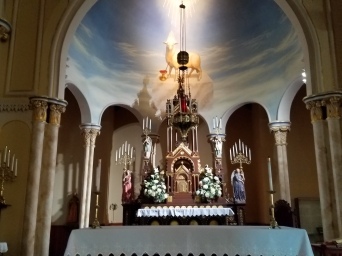




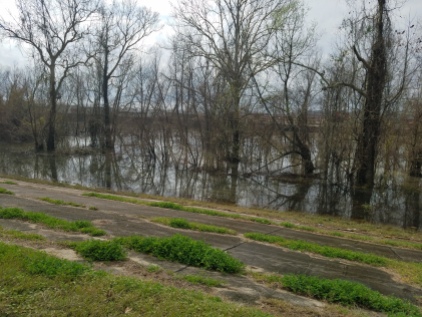
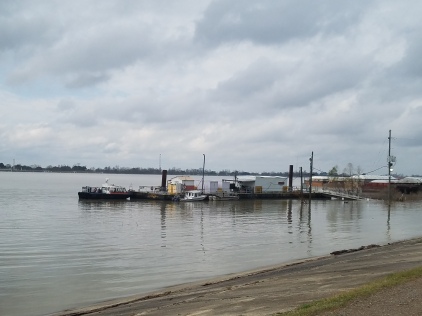


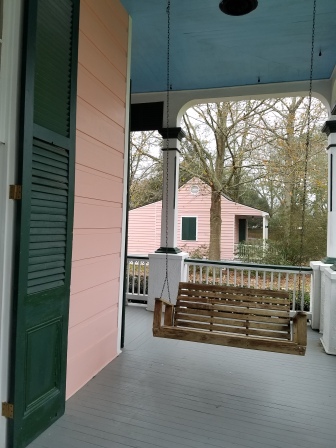
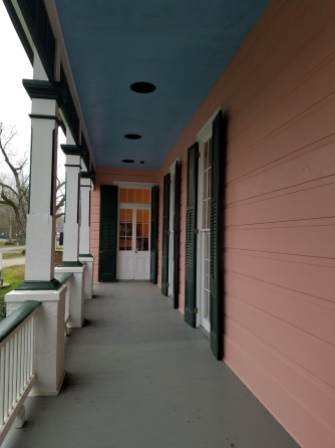




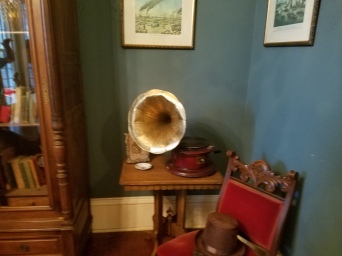











Leave a comment